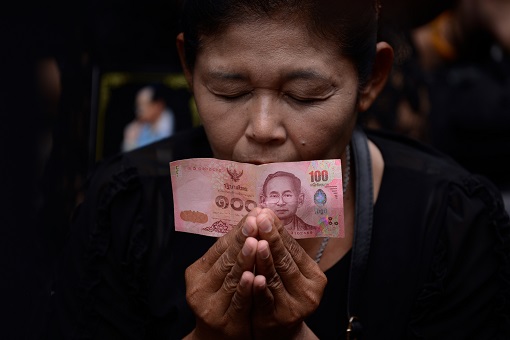Thailand, Southeast Asia’s second-largest economy, was on cloud nine last year. Its currency – Thai Baht – was the champion not only among ASEAN countries, but also in Asia. In fact, the currency has been the best performing since 2018 (not only 2019). The currency appreciated a whopping 8% against the US dollar in 2019 alone. How did Thailand achieve it?
Thai’s solid economic fundamentals – a healthy current account surplus and substantial foreign reserves together with a hawkish central bank – was the secret recipe that lured capital inflows. Due to its stability, many considered the Baht as a safe haven currency among other emerging market currencies. Initially, the Bank of Thailand did not seem overly concerned about Baht’s strength.
The central bank’s foreign-cash pile stood at close to US$220 billion, the equivalent of more than 12 months of imports. Besides very low 0.3% inflation rate, Thailand also received a boost from its status as a gold trading hub. The US-China trade war and global economic uncertainty had driven the precious metal up by 17% (from US$1,300 to above US$1,500 per ounce).

The Bank of Thailand was happy over the currency’s appreciation, as a strong Baht can benefit Thai importers. But when the Baht continued its strength to the point that the country’s export-driven economy contracted for a fourth straight month in June 2019, the central bank had no choice but intervened. It was so bad that the country’s GDP growth was revised from 3.8% to 3.3% last year.
The trade war between China and the U.S., interestingly, was one of the factors contributing to the stability of the Thai currency. It became the preferred Asian hedge against global trade frictions. In other words, the worse the US-China trade war gets, the stronger the Thai Baht becomes. By October, 2019, the currency reached a 6-year high – the strongest level since May 2013.
The country was flushed with so much money that the government allowed – even encouraged – exporters to keep a larger amount of money overseas. Rules were changed to ease the outflows of the currency to stop the skyrocketing Thai Baht. The strong currency has made the country less competitive and worsened its export goods and tourism – two major drivers of Thailand’s economy.

By December 2019, however, the Asia’s best performing currency started to lose its shine. The US-China trade war appeared to end as tensions was easing between the world’s two biggest economies. The “Phase One” trade deal delivered a lethal blow to the Thai currency. The reversal of fortune saw the Baht climbed just 0.1% in December 2019 – making it the region’s worst-performing currency.
But a trade deal was not the only factor that affects the Thai currency. Murphy’s Law saw the unexpected outbreak of Coronavirus, creating a new threat to the currency. The Bank of Thailand had never imagined that a virus that originated from Wuhan, China, would reverse the Asia’s strongest currency in 2019 to the weakest in 2020 (as of today).
It’s barely two months into the New Year 2020, but the Thai Baht has lost as much as 4.1% against the U.S. dollar. In essence, it has lost about half of its 8% gains against the greenback recorded in 2019. To boost its economy, the central bank unexpectedly cut its interest rate for a third time in 6 months to an all-time low on Wednesday (Feb 5).

Effectively, with the exception of Japan, Thailand’s new interest rate – 1% – is the lowest in Asia. Its heavy reliance on Chinese trade and tourists has backfired. Tourism Authority of Thailand fears that that kingdom may see 2-million fewer Chinese tourists than last year’s 11-million. China is Thailand’s biggest source of tourists, contributing 28% of the total 39.8-million last year.
Here’s another angle to measure the importance of the tourism industry – it accounts for 12% of Thailand’s US$505 billion economy. The arrival of 39.8-million tourists in 2019 was equivalent to more than half of Thailand’s population. The Coronavirus confirmed cases has reached 25 (as of 5 Feb), including one person in serious condition, in the country.
Tourism revenue from China constitutes about 2.7% of Thailand’s GDP, while exports to China forms 6% of the country’s GDP. An estimated 108 billion to 220 billion Baht (US$3.47 billion to US$7.08 billion) of tourism revenue could be lost if the Coronavirus epidemic lasts for 3-6 months. The government has also slashed its 2020 economic growth forecast to 2.0%-2.5% from 2.5%-3.0%.

Other Articles That May Interest You …
- Get Ready For US$40+ Oil Price – OPEC’s Plan To Cut An Extra 500,000 Barrels Fails To Stop Coronavirus Panic
- How China’s Disease Surveillance System Discovered The Coronavirus Within 1-Week Of Illness Reports
- 600,000 Tourists Stranded!! – How Did 178-Year-Old British Tour Operator Thomas Cook Suddenly Collapse
- Singapore Cuts Economic Growth To Almost 0% – Here’s Why Everyone Should Be Worried
- China Strikes Back!! – Trade War Becomes Currency War After Suspends U.S. Agricultural Goods & Devalues Currency
- Economists Thought China’s Economy Depends On The World – But McKinsey Research Shows Otherwise
- Obsolete Education System & Racial Politics – Reasons Malaysia Will Miss Major Spoils Of US-China Trade War
- Don’t Get Scammed Or Cheated – One Every Three (33%) Reviews At TripAdvisor Are “Fake”

|
|
February 8th, 2020 by financetwitter
|


|

|

|

|

|

|




























At last the chickens have come home to roost. I for one welcome seeing this happen as the Bank of Thailand have only served the uber rich to the detriment of the middle class and lower class Thais. Let the Baht weaken further.